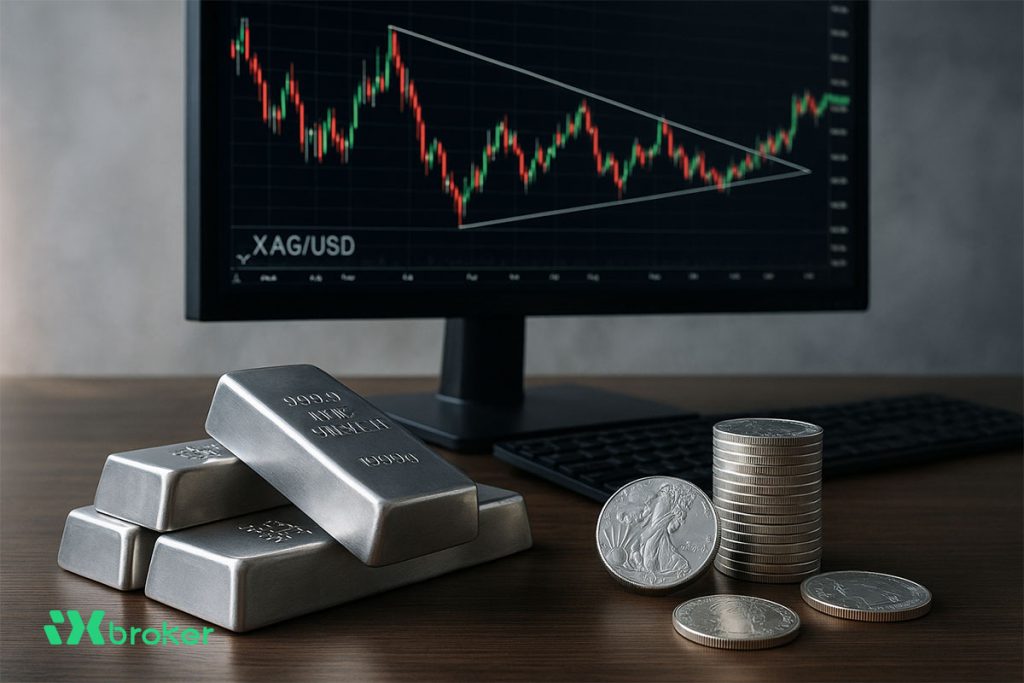By iXbroker Market Intelligence Team
As 2025 unfolds, few topics are capturing more attention at the White House than the sudden and significant decline in the value of the US dollar. President Trump and his closest advisors are closely monitoring the dollar’s slide, aware that its ripple effects could challenge the very core of their economic agenda. From trade policy to tariffs, Federal Reserve strategy, and America’s global financial leadership, the shifting greenback is now as much a political issue as it is an economic one.
A Dollar in Decline: Policy or Problem?
So far this year, the US Dollar Index (DX=F) has fallen nearly 10%—a move that even seasoned economists did not anticipate, especially with the imposition of tariffs expected to have strengthened, not weakened, the currency. Commerce Secretary Howard Lutnick, speaking on national television, suggested that a weaker dollar might actually “soften tariffs completely,” hinting at short-term advantages. A cheaper dollar could make US exports globally competitive, possibly offset some inflation from tariff-driven price hikes, and boost the bottom line for American companies selling overseas.
But the gains are neither clear-cut nor uncontested inside Trump-world. President Trump has doubled down on a “strong dollar” policy, vowing never to let the dollar slide under his watch. “I’m never going to let the dollar slide. The only way that could happen is if you have a dummy as president,” Trump said in a recent statement, reflecting both the political stakes and the branding power the dollar holds in the American psyche.
Mixed Messaging, Complex Outcomes
The falling dollar has reignited old debates within the administration about its true value. Some, like Council of Economic Advisers Chair Stephen Miran, have long argued that the US dollar is “persistently overvalued,” proposing a “Mar-a-Lago accord” that would strategically address currency strength in conjunction with tariffs. The goal? Avoid tariff-induced inflation while supporting broader economic gains, such as reducing national debt and strengthening US businesses.
Yet, the reality inside the West Wing is more divided. Secretary of the Treasury Scott Bessent, a former currency trader, continues to downplay the dollar’s drop, calling it “not out of the ordinary.” He points to similar declines in previous years and insists the focus should be on the dollar’s performance against a strengthening euro, not a weakening US currency.
Global Faith Wavers
There’s no question that the dollar’s recent moves have sounded alarms in some financial circles. JPMorgan Chase CEO Jamie Dimon put it bluntly: “If people decide that the U.S. dollar isn’t the place to be, that will become a problem.” Likewise, Eurasia Group’s Ian Bremmer warned of the risk that, over time, global trust in the dollar could slide closer to parity with the euro.
Still, some analysts urge perspective. Research from SMBC Group notes that, so far, capital flows still favor US assets, and bearish sentiment may be more about short-term positioning than a foundational shift. Others, like Apollo Global Management’s chief economist Torsten Sløk, expect a dollar rebound if trade uncertainties resolve and US assets remain attractive.
Meanwhile, the White House is aggressively fighting any narrative that the dollar’s global status is fading. Trump himself has dismissed criticisms from groups like BRICS, promising tariffs and dismissing the idea that America’s reserve currency role is at risk.
iXDeep Analysis: Market Impact of a Weakening Dollar
The implications of a declining dollar extend well beyond political talking points. For forex and crypto traders, these developments set the stage for heightened volatility and risk—and potentially lucrative opportunities.
Forex Markets:
The weaker dollar environment has pushed major currency pairs (EUR/USD, GBP/USD, USD/JPY) into dynamic new trading ranges. A sustained decline makes US exports cheaper but imports more expensive, contributing to inflationary pressures and shifting central bank strategies. With the Federal Reserve now more likely to hold rates steady—or even hike if inflation persists—FX traders should be alert for pronounced swings, not just in the dollar but in emerging market currencies as well.
Cryptocurrency:
As faith in fiat stability wavers, crypto assets like Bitcoin and Ethereum may see further inflows, especially from institutional investors seeking alternatives to traditional hedges. The possibility of the dollar losing some degree of global trust, even temporarily, could add fuel to speculative rallies in digital assets.
Broader Market Sentiment:
Volatility in the dollar index historically correlates with turbulence across global equities, bonds, and commodities. Investors may continue to shift allocations in search of “safe havens,” reinforcing flight-to-quality dynamics that benefit both gold and crypto.



